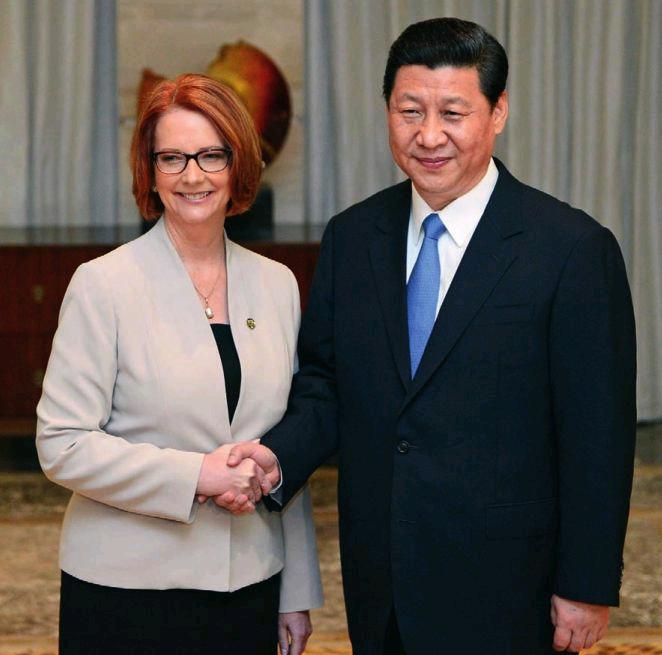Public Policy in the Asian Century
2014-05-27ByJOHNBRUMBY
By+JOHN+BRUMBY
AS premier of Victoria I often had the privilege of welcoming foreign business and government delegations to our state. Many were from Asian countries, and I was frequently struck by their deep interest in the way government works in our country – how the states relate to the Commonwealth, how the public service relates to the executive, and how public policy is made and implemented.
It became clear to me that the rising Asian nations – especially China – are constantly on the lookout for worlds best practice. Put simply, they want to know what works. They face a number of big challenges associated with their growing wealth and power, and are hungry for new ideas. Consequently, they are open to learning from a range of partners. But in the Asian Century, this sharing of policies and practices should not be a one way street. It would be the height of arrogance for Australia to assume we have nothing to learn from our Asian counterparts.
The Melbourne School of Government at the University of Melbourne held a conference entitled “Public Policy in the Asian Century” in December 2013, which brought together economic, diplomatic and political leaders and scholars to discuss how the rise of Asia might affect the way we think about public policy – not just what it contains, but how it is administered in a world in which the geopolitical balance of power is shifting inexorably eastwards.
The fact is, we havent been here before. The sheer speed of Asias rise is unprecedented. During the Industrial Revolution it took England 50 years to double its real per capita income. Last years Australia in the Asian Century White Paper pointed out that Japan, Singapore, South Korea, China and India each did this in a decade. As the regions growth continues at a galloping pace, so too does the lowering of barriers to trade and investment, and the advance of communications technology. All of this means that Australia is more interconnected with, and more reliant upon the worlds newest economic power bloc than ever before.
The speed of Asias rise means that a concerted effort is required by governments, business and the wider community if we are to secure Australias place in the region. After all, it took almost 70 years of careful diplomacy and relationship building for Australia to achieve a free trade agreement with America. In the Asian Century, we dont have that kind of time.
I believe the answer lies in partnership, and openness to new ideas. At every level – from the highest reaches of government to the local primary school – we must be proactive in forming partnerships with governments, businesses, schools, universities and other organizations right across Asia. Last October I was excited to attend the opening of Monash Universitys new Joint Graduate School building in Suzhou, near Shanghai. It is long term relationships like this one between Monash and Chinas Southeast University that will further integrate Australia into Asia – and open up new ways for us to learn from one another. It is important to remember that a lasting and fruitful partnership is more than simply economic –it is person to person, involving social and cultural as well as financial exchanges. Nor is a partnership one-sided. We must be as eager to learn as we are to share what we already know.
When thinking about public policy in the Asian Century, Australian governments must recognize the value of partnerships right across their legislative, executive and administrative spheres. Former Prime Minister Julia Gillards historic achievement of an annual high-level leadership dialogue with China was rightly celebrated by both sides of politics. But there is potential for even more cooperation if we look, for example, to the public service.
While it is always worthwhile to send a senior public servant for training at the Harvard Kennedy School of Government or the London School of Economics, we should not overlook Asian options such as the Lee Kuan Yew School of Public Policy in Singapore. A public servant studying there will have the chance to absorb some of the subtly different outlooks and attitudes that charac- terize public policy-making in Asian countries. This will be invaluable knowledge upon his or her return, because true partnership in the Asian Century will mean more than just a ramped-up economic relationship – it will mean thinking about the values and principles that we bring to the task of government, and how our practices may be informed by some of the centuries-old traditions of the Asian neighbors to our north.
Australias approach to public policy-making has always evolved – from colonial times, through federation and the geopolitical shifts occasioned by two world wars, to the end of the 20th century and the beginning of a new millennium. As we pivot to Asia in the 21st century we must be open to the best ideas as well as new products, new markets, and new investment. By asking how Australias understanding of public policy will be affected by the rise of our region, the Melbourne School of Government is tackling one of the most important questions of the Asian Century.
